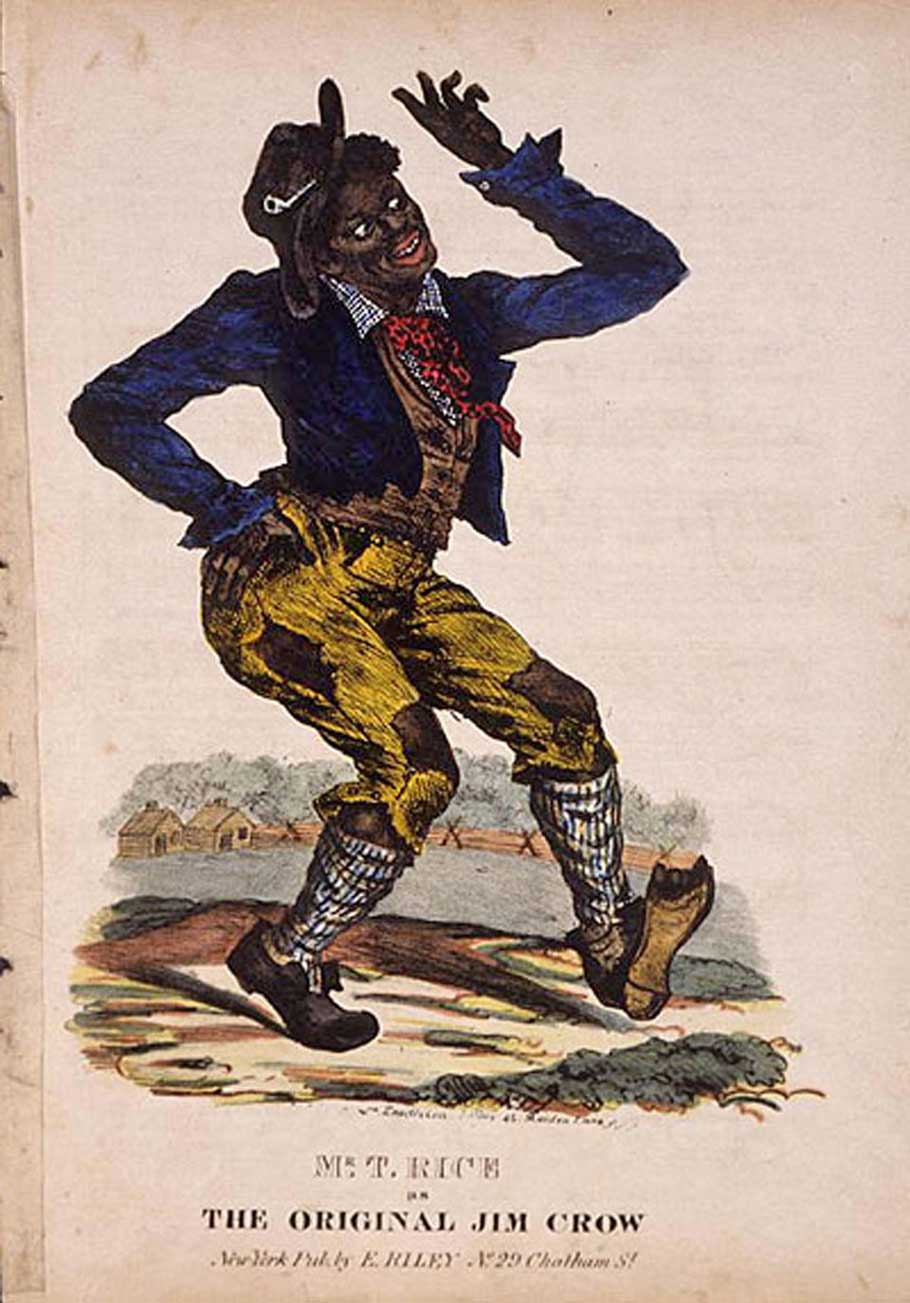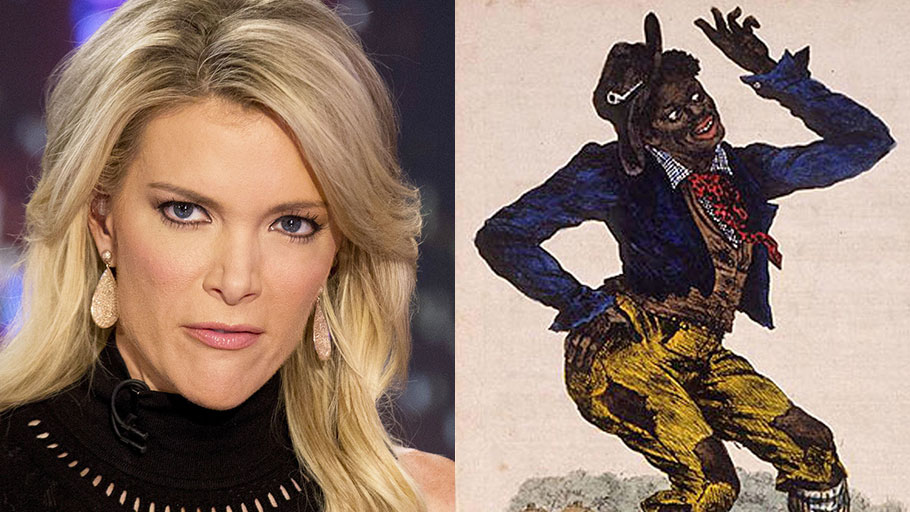Megyn Kelly and Jim Crow, a character worn in blackface used to mock African-Americans. Brendan McDermid/Reuters; Wikimedia Commons
- “Today” host Megyn Kelly apologized Wednesday for defending blackface, the act of non-black people wearing makeup to make themselves look black.
- Blackface has a racist history in the United States. It was used in minstrel shows, movies, and other forms of entertainment to dehumanize African-Americans and exclude them from the entertainment industry.
- Mocking caricatures spread stereotypes about African-Americans that were used to deny them civil rights.
- In recent years, white people have claimed that blackface isn’t harmful, and should be permitted on Halloween, but the pervasive damage spread by blackface still persists today.
This week, Megyn Kelly defended wearing blackface— the racist act of nonblack people wearing makeup to try to look black — before issuing an apology for her comments.
“I was wrong and I am sorry,” she said on NBC’s “Today” show Wednesday. “I learned that the history of blackface is being used in awful ways by racists in this country. It is not okay for that to be part of any costume, Halloween or otherwise.”
Blackface, as Megyn Kelly said she didn’t known until this week, is more than just a form of makeup meant to make one’s skin darker. It has a history of being used to mock African-Americans and exclude black actors from the entertainment industry.
Blackface was used in minstrel shows to offer up stereotyped and negative impersonations of African-Americans
The first minstrel shows, as they were called, were performed in 1830s New York, according to the National Museum of African-American History & Culture. Actors used blackface caricatured black slaves, wearing burnt cork or shoe polish on their faces to make themselves look “black.” The performances “characterized blacks as lazy, ignorant, superstitious, hyper-sexual, and prone to thievery and cowardice,” according to the museum.
The most famous character from these shows was Jim Crow, a character developed by Thomas Darmouth Rice and portrayed as a raggedy, deformed trickster who spoke in broken English. Jim Crow’s name was later adopted to describe a set of laws in state and local legislatures to oppress black people between the Civil War and the Civil Rights Era of the 1960s.

A poster advertising Thomas D. Rice playing Jim Crow. Wikimedia Commons
After the end of the Civil War, the popularity of minstrel shows and blackface exploded, highlighting a stark contrast between African-Americans in media depictions and what they were actually like.
Well-known and beloved actors including Shirley Temple, Judy Garland, and Mickey Rooney depicted blackface, bringing it into the movie industry as well as theater.
In “The Birth of a Nation” — the racist and influential 1915 movie about the Ku Klux Klan by D. W. Griffith — white actors wore blackface to make them look foolish, obedient to whites, and hypersexual. Blackface contributed to the pervasive stereotype that African-Americans were stupid, ignorant, and criminal — which offered excuses to white lawmakers who denied them civil rights.
Some people still try to excuse it for Halloween
Blackface remained popular in the United States until the 1960s and the emergence of a burgeoning Civil Rights Movement. There’s even an infamous 1953 Loony Tunes episode where Bugs Bunny dons it. But to this day, there remain controversies where people attempt to justify it around Halloween or at fraternity and sorority theme parties. In 2013, “Dancing with the Stars” champion Julianne Hough’s sparked outrage when she wore blackface and cornrows to dress as “Orange Is the New Black” character Crazy Eyes.
But as Megyn Kelly’s “Today” colleague Roland Martin said, African-Americans still don’t think it’s OK.
“I think the problem is, for African-Americans, we know the history and too many white Americans don’t know or won’t accept it. And the reality is, it is American history, yours and mine,” he said on “Today” Wednesday. “You look at blackface. White entertainers wore blackface to mimic African-Americans, to caricature African Americans. Look at minstrel shows. Whites did not want to see the humanity of black people. So, therefore, they had blackface.”
Martin pointed out that the dehumanizing legacy of blackface continued even after the Civil Rights era, and that its imagery remained ingrained in mass media.
“This is American history, where black people have been assaulted in magazines, television, radio, all of these images that have continued for centuries,” he said. “When we are grown and educated, we have to go beyond what we were taught and what we learned in our households and say, I better be fully aware of real American history, as opposed to being in denial of what actually took place in this country.”
Given that history, Martin said, it’s inexcusable for white people to wear blackface.
“Seeing a white person darken her skin, even for a costume today, evokes that past,” he said.















